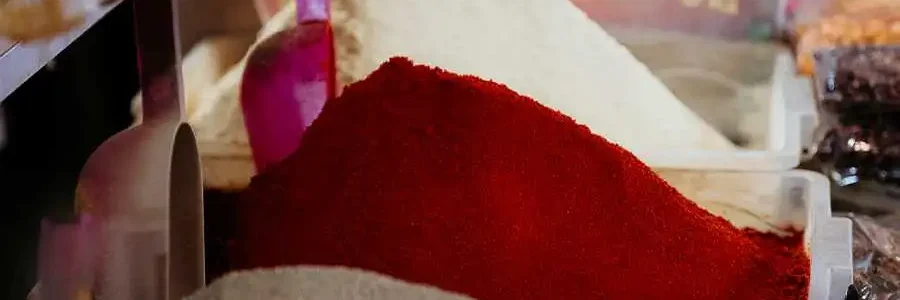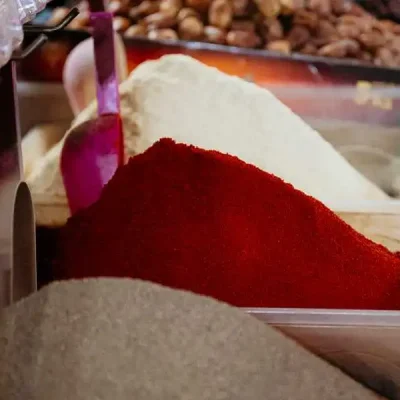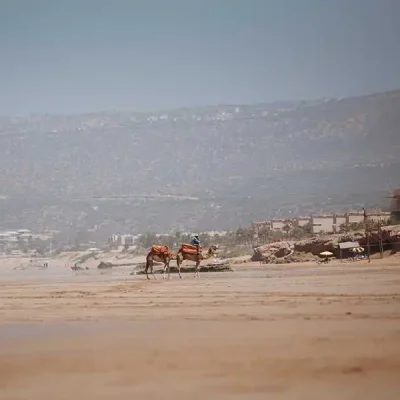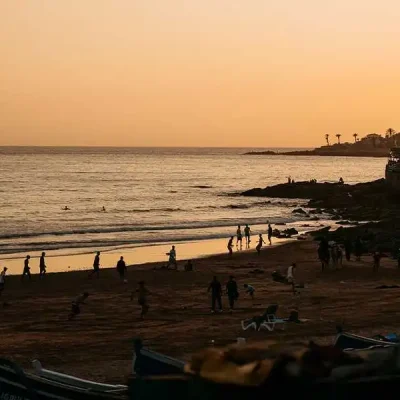Welcome to Souk El Had, the bustling heart of Agadir and one of the largest urban markets in all of Morocco and North Africa. This isn’t just a place to shop; it’s a vibrant, living institution—a sensory labyrinth where the traditions of Moroccan commerce and culture come alive.
For anyone visiting Agadir, a trip to Souk El Had is an absolute must-do, offering a window into the authentic daily life of the city.
A City Within a City:
Souk El Had is more than a market; it’s a sprawling, walled metropolis of commerce, covering a massive area of approximately 13 hectares and housing over 6,000 shops and stalls. The name “El Had” means “Sunday” in Arabic, a nod to its historical function as a great Sunday fair where merchants from the Souss region and beyond would converge. While it’s now open every day except Monday, the name remains a testament to its long-standing importance.
The souk’s impressive ramparts, inspired by the city’s ancient Kasbah, hint at the treasures and organized chaos that lie within. Rebuilt and modernized after the devastating earthquake of 1960, the souk today is a symbol of Agadir‘s resilience, blending traditional Berber-inspired architecture with modern, well-structured pathways.
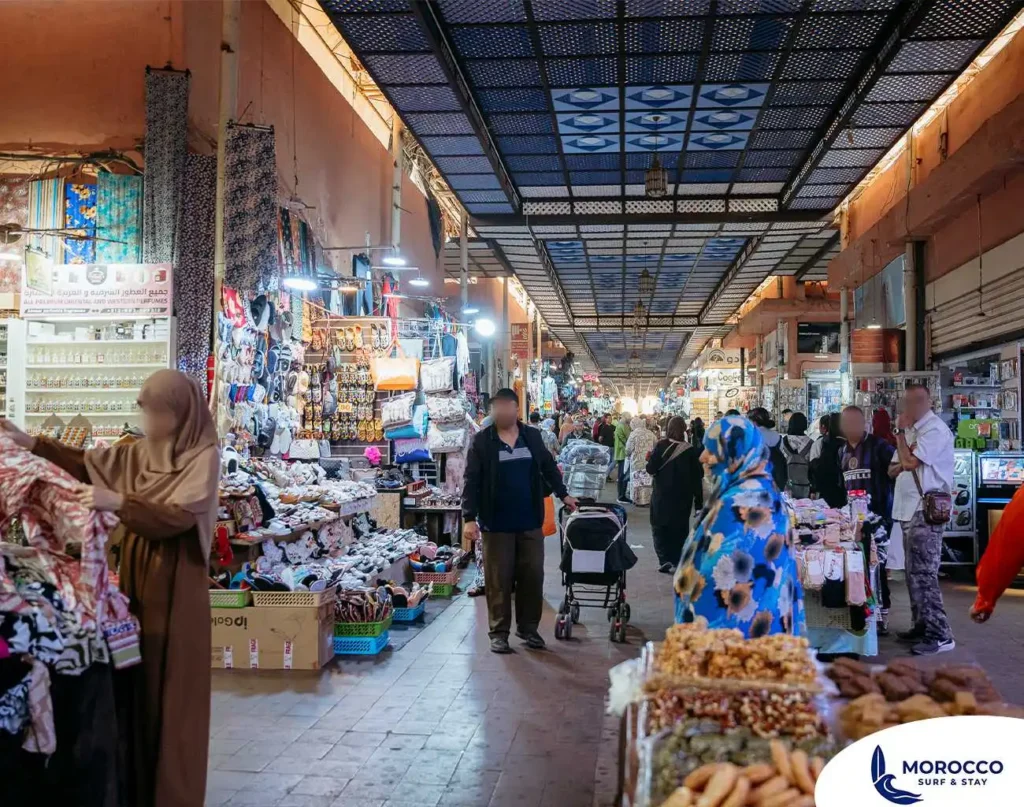
A Labyrinth of Senses:
Stepping through one of the souk’s 13 immense gates (or “babs”) is to be immediately immersed in an experience that engages every sense.
Sights:
The market is a kaleidoscope of colors. Mountains of vibrant spices, intricately woven carpets, and a rainbow of fruits and vegetables are all on display. You’ll see artisans at work, crafting leather goods, pottery, and silver jewelry.
Sounds:
The air is filled with a lively symphony of sounds—the friendly banter of merchants, the chatter of customers, and the occasional call to prayer echoing from a nearby mosque. It’s an energetic hum that defines the atmosphere.

Smells:
The aromas are intoxicating. The sweet scent of dates and fresh mint tea mingles with the rich, earthy fragrance of spices like saffron, cumin, and Ras El Hanout. The scent of tanned leather and argan oil perfumes the air in the artisan sections.
Explore the Coastline and Beaches:
Beyond the surf spots, the coastline offers plenty of secluded bays and stretches of sand perfect for a quiet day of sunbathing or a long walk. Imourane Beach and the promenade are great for a leisurely stroll.
Tastes:
You can’t leave without tasting the local flavors. Stop at a small food stall for a glass of freshly squeezed orange juice, a warm “m’semen” (a Moroccan flatbread), or a delicious tagine or couscous dish.
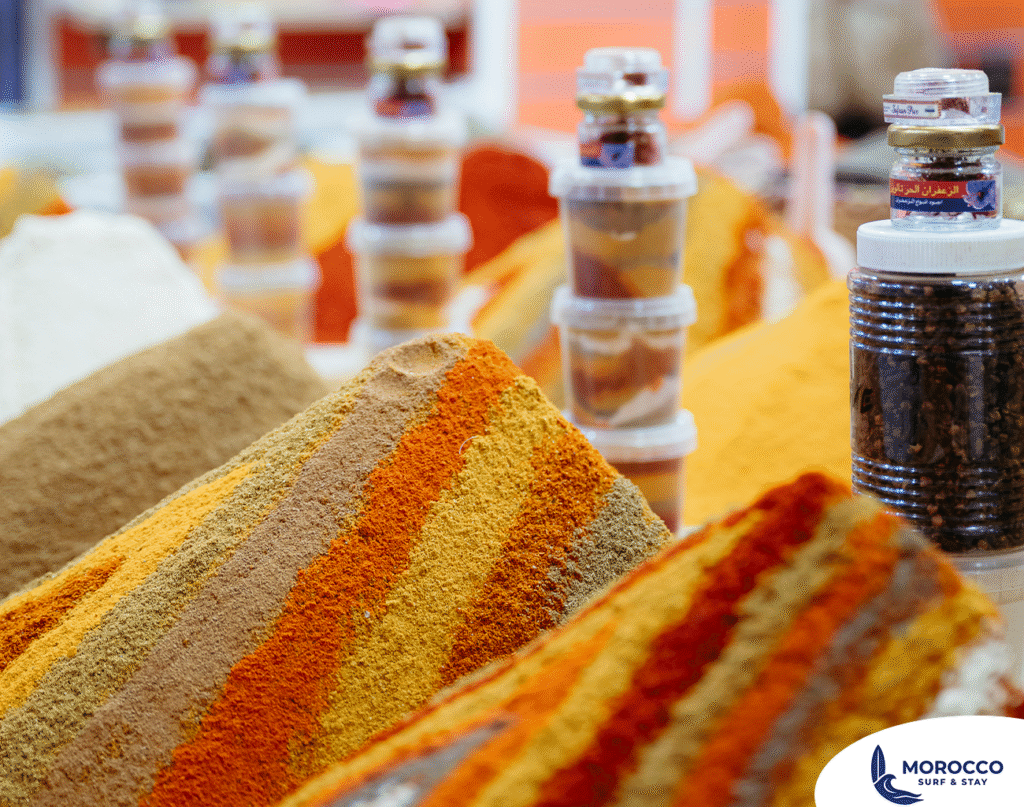
What to Buy: Navigating the Souk's Sections
Souk El Had is well-organized, with each type of product typically found in a specific section. This helps both locals and tourists navigate the vast space.
Artisanat (Handicrafts):
Here you’ll find authentic Moroccan crafts. Look for beautiful hand-knotted carpets, traditional leather babouches (slippers), intricately carved wooden boxes, and handmade silver and Berber jewelry. Be prepared to haggle—it’s part of the experience.
Spices and Food:
This is where the souk’s culinary heart lies. The spice section is a photographer’s dream, with hundreds of different spices piled high. You can also buy fresh produce, olives, nuts, and sweets.
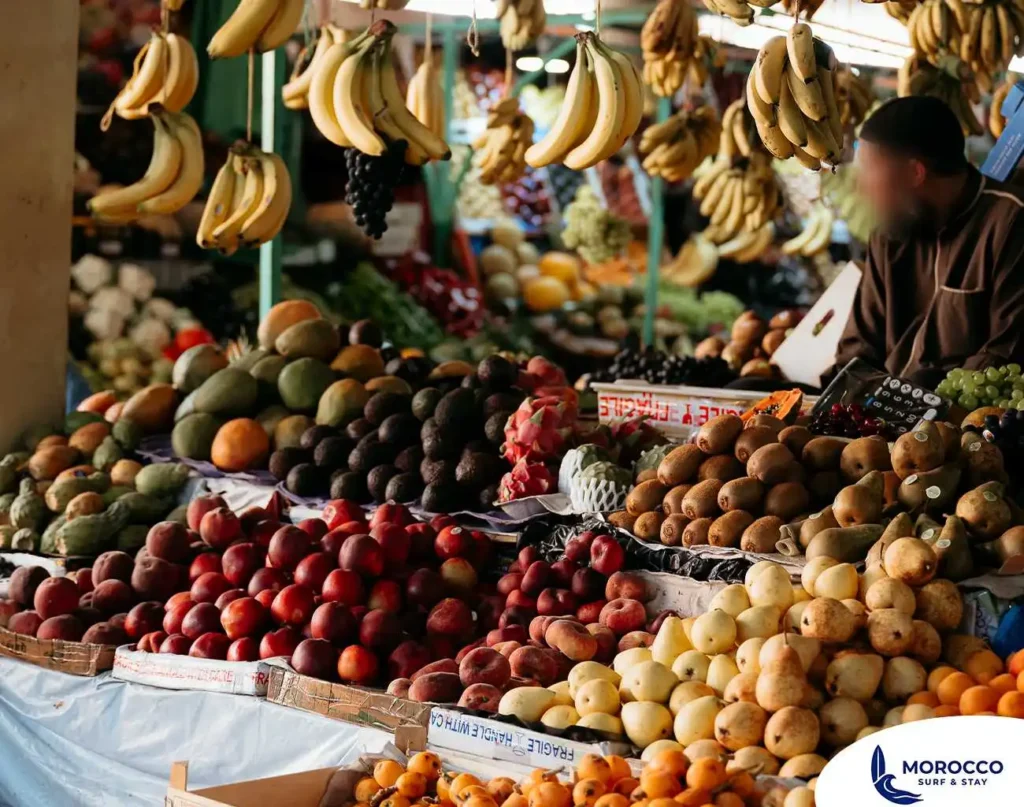
Clothing and Textiles:
he aromas are intoxicating. The sweet scent of dates and fresh mint tea mingles with the rich, earthy fragrance of spices like saffron, cumin, and Ras El Hanout. The scent of tanned leather and argan oil perfumes the air in the artisan sections.
Explore the Coastline and Beaches:
From traditional djellabas and caftans to modern clothing and fabrics, this section offers a wide variety of textiles.
Furniture and Home Goods:
The souk even has sections dedicated to home furnishings, from intricate metalwork lanterns to hand-painted ceramics and furniture.
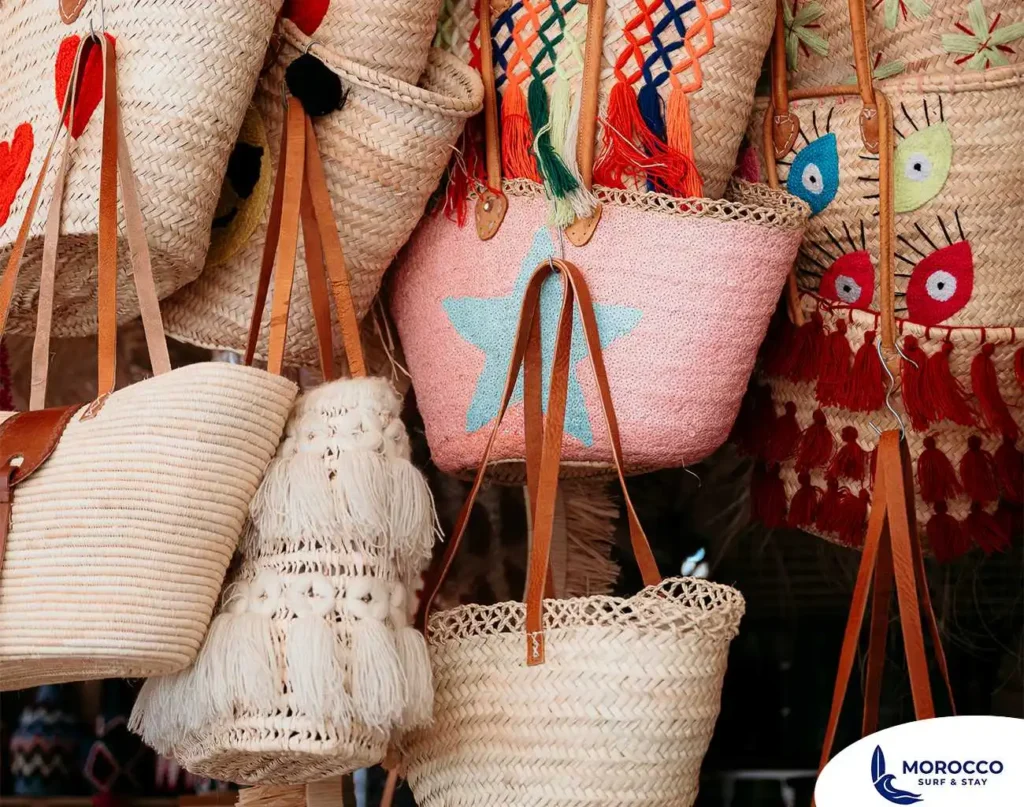
Practical Tips for Your Visit:
Opening Hours:
The souk is open from Tuesday to Sunday, typically from 9:00 AM to 6:00 PM. It is closed on Mondays for cleaning. The best time to visit is in the morning on a weekday to avoid the biggest crowds.
Getting There:
The souk is centrally located and easily accessible. A petit taxi is the most convenient and affordable way to get there from anywhere in Agadir. Just tell the driver “Souk El Had.”

Haggling:
Haggling is a customary practice. Start with a price significantly lower than the vendor’s initial offer and work your way up. Keep it friendly and light-hearted—it’s a fun negotiation, not a fight.
Cash is King:
Most vendors only accept cash (Moroccan Dirhams). It’s a good idea to have small bills on hand. There are ATMs available near some of the main gates.
Respect Local Customs:
While the souk is a tourist-friendly area, it’s still a traditional Moroccan space. Dress respectfully by covering your shoulders and knees. Always ask for permission before taking a photo of a person.
Beware of Scams:
Be mindful of your belongings in crowded areas. Also, be aware that some products, particularly in tourist-heavy areas, may not be authentic. Look for artisans who are actively working on their craft to ensure you’re getting a genuine product.

A Symbol of Resilience and Community
More than just a commercial hub, Souk El Had is a testament to the enduring spirit of Agadir. It’s a place where generations of families have run their businesses, and where the community gathers for their daily needs and social interactions.
A visit here is not just a shopping trip; it’s a chance to connect with the local culture, witness the vibrant rhythm of Moroccan life, and take home not just a souvenir, but a genuine experience.

